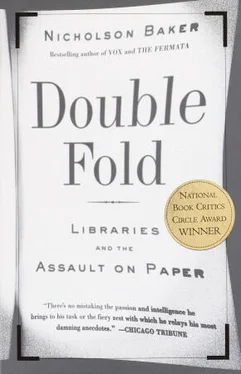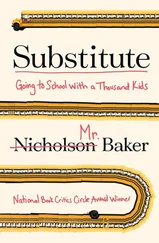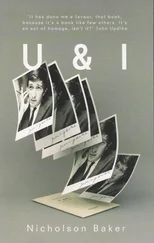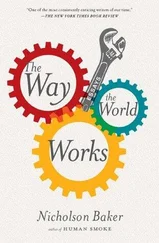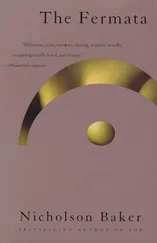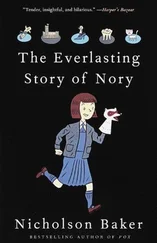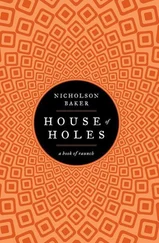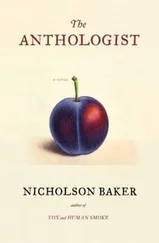Real historians of the late nineteenth and early twentieth centuries aren’t reading the old newspapers very much anymore, though — not page by page and month by month, for pleasure — and the texture and content of historical writing has, one suspects, undergone subtle changes (thinnings of specificity, losses of groundedness) as a consequence. Historians don’t read the old papers because their libraries don’t keep the old papers to read, and microfilm is a brain-poaching, gorge-lifting trial to browse. When you try to survey a series of filmed issues methodically, you miss things that would be obvious to an eye-reader; it’s oddly difficult sometimes to do the equivalent of turning the page, especially when you’re handling heavily scratched or faded microfilm and must crank up the magnification to make out the words. (This is particularly true at the Library of Congress, where the reader-printers in the newspaper room are in such poor repair that some of them pull forward rhythmically on their own at times, their take-up reels afflicted by a sort of electro-Parkinsonism.) You feel as if you’re mowing an endless monochromatic lawn, sliding the film gate this way and that, fiddling with the image-rotation dial and the twitchily restive motor switch. If you have a date and a page number, you look that one citation up and leave; you’re rarely tempted to spend several hours splashing in the daily contextual marsh. “Certainly the patron’s desire to browse through back issues of newspapers is almost completely gone — people rarely browse 5through microfilm”: so wrote E. E. Duncan in Microform Review in 1973. At the Archives of Ontario, one of the microfilm readers had an air-sickness bag taped to it; since the seventies, image-ergonomists have known of a kind of motion sickness that afflicts some microfilm users which seems to be caused by the difficulty of visually tracking the creep and lurch of passing text-scapes. Ben Procter, a recent biographer of William Randolph Hearst, appears stoic, brave, unflinching, because he was actually willing to read what Hearst published: “Oh, yes, microfilm, yes,” he told Brian Lamb, on Booknotes. “It can be brutal, but you find out a great deal about the man and about his papers.”
There are nice things about microfilm, too — the congenial clicks of your neighbor’s forward button; the way the chosen image fuzzes and bows modestly offscreen as you press print, as if it must retire to another room to change; the warbly whine of the reel’s motor when the glass plate lifts to let the film rewind at straightaway speed; the loud confident slaps of the freed leader that proclaim to everyone in the room that someone has finished his or her research. Because microfilm readers frame text arbitrarily, conferring equal eye-weight on all segments of a page, you occasionally discover tiny items you wouldn’t have seen if you read the paper conventionally, favoring the areas that its editors and layout artists expected you to look at first. And of course questing scholars cheerfully endure the ocular and neckular ordeal of microfilm if they have good reason to — if they can’t go to a library where the originals are, or if they want to make copies, or if the paper itself is indeed so fragile that it can’t be touched or turned without damage. But librarians have lied shamelessly about the extent of paper’s fragility, and they continue to lie about it. For over fifty years they have disparaged paper’s residual strength, while remaining “blind as lovers” 6(as Allen Veaner, former editor of Microform Review, once wrote) to the failings and infirmities of film.
The infirmities are worrying. After nitrate film stock proved hazardous, a compound called cellulose acetate became, in the nineteen-forties, the medium in which microphotographers placed their faith. At the National Bureau of Standards, experimenters baked samples of it in an oven, tested them for residual strength (the research was subsidized 7by “several manufacturers of photographic films and equipment”), and declared that “cellulose acetate motion-picture film 8appears to be very promising for permanent records.” Charles Z. Case, of Recordak, seized on this wishful governmental verdict, assuring library administrators (some of whom didn’t need much convincing) that his company’s product was “in the same category of permanence 9as the finest book-papers.”
But acetate has a way of releasing (or “off-gassing,” to use the conservator’s term) the acetic acid employed in its manufacture; as the decades pass, afflicted microfilms can begin to shrink, buckle, bubble, 10or stick together in a solid illegible lump. Responding to what a former chief of microforms at the New York Public Library called “the dreaded vinegar syndrome” 11—so named for its sinus-clearing smell — the industry switched, by the mid-eighties, 12from acetate to rip-resistant polyester. (Polyester-base film was developed by Kodak in the early sixties, in part to solve problems encountered by the CIA’s Corona spy satellites: 13the acetate film tore in orbit.) Millions of rolls of acetate images 14remain in libraries; indeed, a sizable portion of the preservation budget in some large institutions now must go toward the reduplication, with an attendant loss of detail, of old micro-negatives or positive prints onto fresh polyester.
Better plastic doesn’t solve all the problems, either, since microfilm’s emulsion — the soft layer of gelatin and silver that holds the image — has vulnerabilities as well. In the early sixties, there were reports of strange spots 15—some yellow, some red, some with concentric rings — that had developed in the master negatives of collections at the National Archives. In response, inspectors from the National Bureau of Standards examined thousands of rolls of government microfilm; they found “a widespread incidence of defects.” The General Services Administration issued Circular No. 326 in 1964 to all heads of federal agencies warning of the spots (I found it filed in Verner Clapp’s papers at the Library of Congress) and developed a half-day workshop covering “blemish recognition, inspection techniques, and reporting procedures.” No remedy was proffered, because none was known. Still, the GSA quoted the Bureau of Standards report’s reassurance that “from the practical point of view, no information has been lost.”
This bad news simmered for some years, and manufacturers in the meantime promoted two varieties of non-silver microfilm: vesicular film, whose image results from the heating of polyester until it forms tiny light-absorbing bubbles; and diazo film, which uses a dye made of diazonium salts on exposure to ammonia. Both vesicular and diazo films are cheaper than silver film. But in the early seventies, some librarians were distressed to discover that texts reproduced on “Kalvar”-brand vesicular film had been releasing hydrogen-chloride gas, which (according to Susan Cates Dodson in Microform Review ) “attacked metal filing cabinets, 16and reduced the boxes the film came in to dust.” The corrosiveness was confined to one formula of film, but all vesiculars proved to be heat sensitive — their tiny gas bubbles begin to collapse above 170 degrees, and above 175 degrees (wrote Carl M. Spaulding, a program officer with the Council on Library Resources, in 1978) “even the most heat-resistant [vesicular films] will suddenly suffer complete image loss.” 17Dodson measured the temperature 18of the glass film gates of common microfilm readers and found that some reached 180 degrees.
Diazo microfilm, on the other hand, though relatively cheap, is prone to fading on exposure to the light of the reading machine. (It fades in the dark, too, but more slowly.) One piece of research from 1978 found that a frame of diazo film would be likely to suffer serious light-damage 19after three and a half to twenty hours of use, depending on the brand of film. Major historical dates on diazo — Lincoln’s assassination, say, or the moon landing — could rack up enough exposure time to fade away, while frames nearby might still retain good contrast; if somebody left a reader on over a weekend with film in it, that might be the end of the image.
Читать дальше
